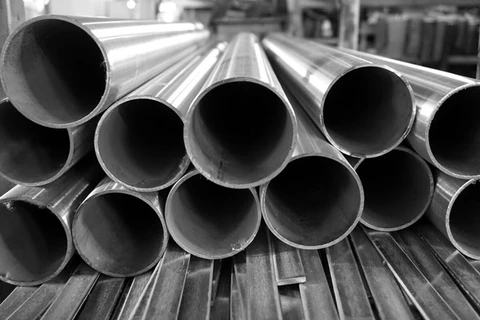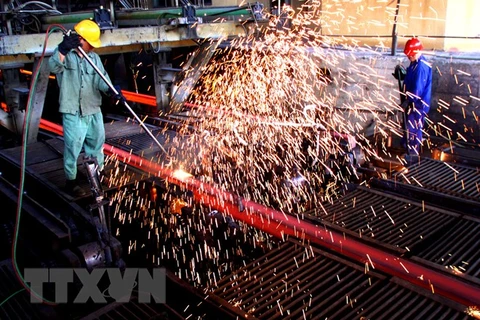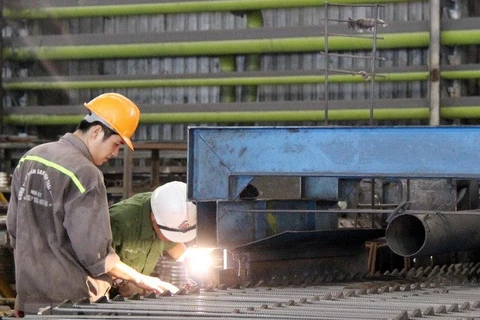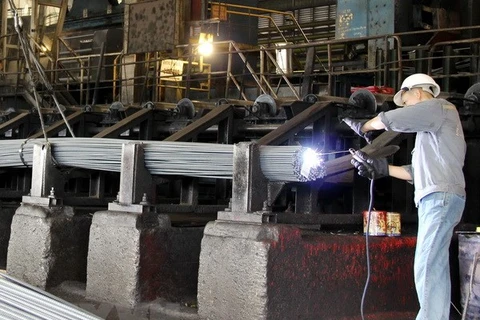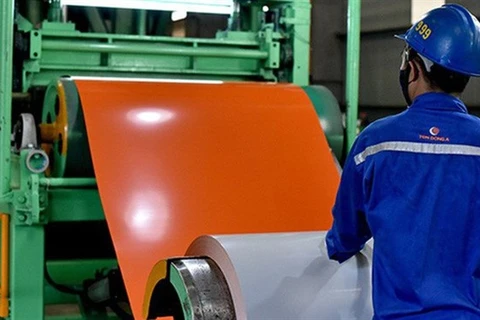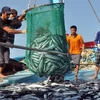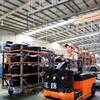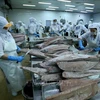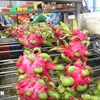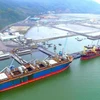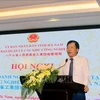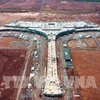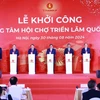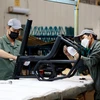 Colour-coated steel produced at the Hoang Ha Group Joint Stock Company in the northern province of Quang Ninh. (Photo: VNA)
Colour-coated steel produced at the Hoang Ha Group Joint Stock Company in the northern province of Quang Ninh. (Photo: VNA)Hanoi (VNS/VNA) - Despite the imposition of anti-dumping duties on colour-coated steel products by Indonesian authorities, Vietnamese steel producers should not worry about the possibility of losing competitiveness, according to the Vietnam Steel Association (VSA).
Recently, Indonesia officially announced the application of anti-dumping duties on colour-coated steel imports from Vietnam, from 12.01 percent to 28.49 percent in five years.
Concerns have been raised that this tax imposition will cause difficulties for Vietnamese enterprises, and may cause them to lose the market. However, the VSA said that with large demand in this market, domestic producers will still be able to compete with rivals.
According to VSA, 60 percent of made-in-Vietnam colour-coated steel products are exported to Southeast Asian markets including Indonesia, Thailand and Myanmar.
The Indonesian Anti-Dumping Committee (KADI) said that from July 2015 to June 2016, Indonesia imported more than 224,000 tonnes of colour-coated steel, of which about 196,000 tonnes came from Vietnam and China, accounting for 87.5 percent of the country’s total steel imports.
VSA Chairman Ho Nghia Dung said that the taxed enterprises are Nam Kim, Hoa Sen and Ton Dong A. He attributed the anti-dumping measure to Indonesian suspicion that Vietnamese steel enterprises imported raw materials from China for production.
He said "With tariffs ranging from 12 percent to more than 28 percent, exports will be more difficult. It is likely that businesses will have to reduce exports to the market.”
However, it is not likely that they will lose this market, because it has a huge demand for galvanised steel sheets," Dung said.
"Businesses have expanded market to include Europe and the United States, and promoted exports to Southeast Asian countries,” he added.
However, the VSA Chairman also urged domestic enterprises to improve their competitiveness, especially in the context of integration and application of safeguard measures as much as today.
In recent years, steel production has been one of the industries most subjected to trade lawsuits. By the end of 2017, out of a total of 124 trade defence cases against Vietnamese exports, there were up to 30 steel-related cases, mainly focusing on anti-dumping investigations.
Therefore, the steel industry needs to create a closed production chain from local input supply to finished products and invest in advanced production technology to reduce production costs and help businesses develop in a stable and sustainable fashion, Dung said.
In particular, to prevent traditional markets from being narrowed, VSA said that businesses need to invest in overseas markets where there is a shortage of local steel producers like Africa, South America, Cambodia, Laos and Malaysia.
It is forecast that demand for steel in Indonesia and the Philippines will increase. Countries in ASEAN-6 (Singapore, Malaysia, Thailand, Indonesia, the Philippines, and Brunei) are expected to post a positive growth rate in steel consumption to reach over 90 million tonnes by 2019. This is a good sign for Vietnamese steel enterprises if they continue to promote exports to these markets.
According to Ton Dong A Joint Stock Company, tariff barriers and non-tariff barriers are challenging for exporters, especially in the steel industry.
By 2018, Ton Dong A targets to export 800,000 tonnes of steel products, so the company must ensure the quality of products is in accordance with international standards by using high quality raw materials from Tier 1 suppliers.-VNS/VNA
VNA
